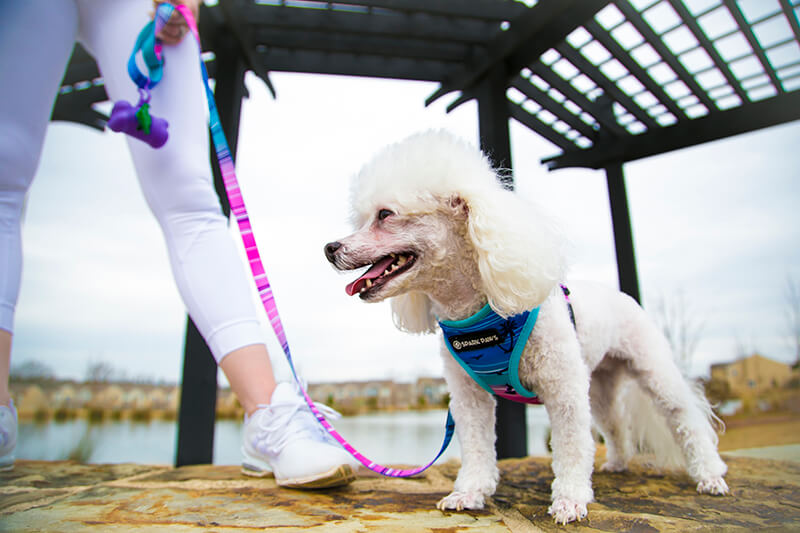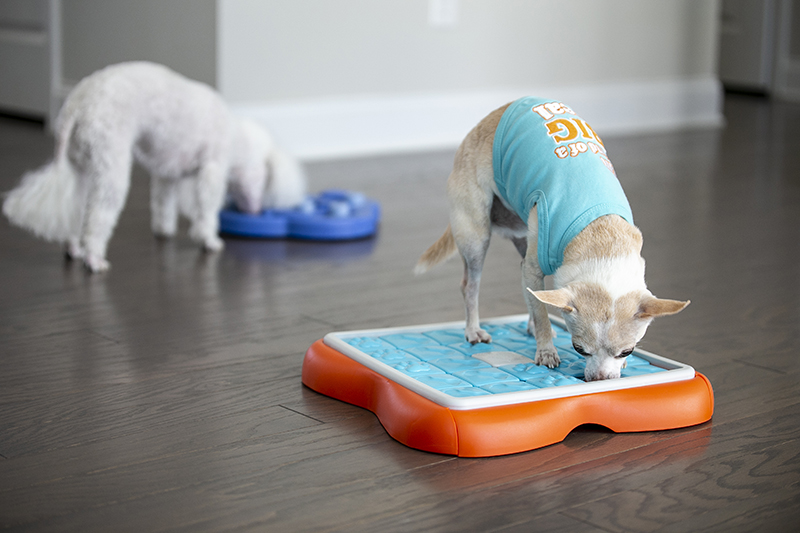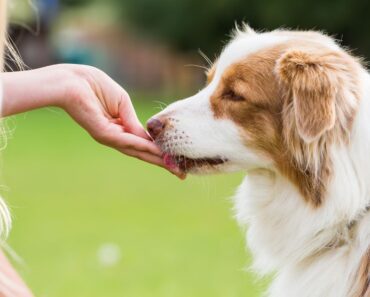Just like with people, regular exercise is an essential key to canine wellness. It helps our dogs build strong muscles and maintain healthy body weight. It’s also good for their circulation, heart, and lungs. Plus, regular exercise boosts happy hormones, enhances mood, and busts boredom. While a lot of good comes along with daily movement, how much exercise do dogs need? And is there such a thing as too much exercise?
Consider Your Dog’s Age
Puppies
A puppy’s bones are still soft and spongy (they aren’t as dense as adult dogs), their growth plates haven’t closed, and their bodies are continuing to develop. So, over-exercising puppies can negatively impact their musculoskeletal development. This is especially the case for large breed puppies.
In general, short, low-impact, controlled activity sessions each day are best for puppies. While there is no exact science to how much exercise your puppy needs each day, many veterinarians and canine experts recommend the five-minute rule. Basically, it means puppies need five minutes of exercise per month of age, up to twice a day. So, that would mean an exercise session for a three-month-old puppy should last a maximum of 15 minutes.
Adults
As your dog matures, you’ll work up to longer walks, hikes, and more challenging activities, like agility. Most adult dogs should get between 30 minutes and two hours of exercise every day.
Seniors
As adult dogs age into senior canines, they’ll still need daily movement. But, not as much. Typically, senior dogs need about 30-60 minutes of exercise per day, broken into two more more activity sessions.

Consider Your Dog’s Breed
Hunting, swimming, herding, and other working dog breeds – like Labrador Retrievers, German Shepherds, Huskies, and Border Collies – will require more exercise. Toy breeds – such as the Chihuahua and Maltese – don’t require quite as much.
If you have a short-nosed breed – like a Pug or Bulldog – be mindful of exercise amount and intensity. These short-muzzled pups have impeded airflow, putting them at a higher risk of heat exhaustion and oxygen deprivation.

Consult With Your Vet
At the end of the day, every dog’s needs are unique. Keep an eye on your pup’s limits, watch for signs of tiredness, and never push them. If you have any questions or concerns over your dog’s activity level, consult with your vet!
Don’t Forget About Mental Exercise
Along with moving our dog’s body, there’s another type of exercise our pups need. It’s called mental stimulation and, just like it sounds, it literally means you’re exercising your dog’s mind. Find out more about mental exercise HERE!









